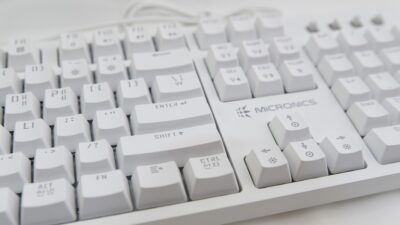In the world of gaming, simulation, and robotics, joysticks have long been revered as essential control devices. Whether piloting a flight simulator, maneuvering a crane in a warehouse, or playing an arcade classic, the joystick’s design and functionality play a pivotal role in user experience. But what lies beneath the surface? In this article, we’ll explore the anatomy of a joystick, how it works, and why it matters.
Understanding the Joystick
A joystick consists of several key components that work together to convert physical movements into electronic signals:
-
Base: The base is typically made of durable plastic or metal and houses the internal components. It often features a non-slip design for stability during use.
-
Handle (or Stick): The handle is the moving part that the user manipulates. It is designed for comfort and usually features a grip to ensure ease of use over extended periods.
-
Sensors: At the heart of a joystick are sensors that detect the position and movement of the stick. There are different types of sensors, including:
- Potentiometers: These are variable resistors that change their resistance based on the angle of the stick.
- Hall Effect Sensors: These sensors detect the position of the stick using magnetic fields, providing a more precise and long-lasting alternative to potentiometers.
-
Control Circuitry: The control circuitry processes the signals received from the sensors and converts them into data that can be interpreted by a computer or game console.
- Buttons and Triggers: Many joysticks come equipped with additional buttons and triggers for added control. These can be programmed for various functions within a game or application.
How It Works
When a user moves the joystick’s handle, the following occurs:
-
Movement Detection: As the stick is tilted or rotated, the sensors detect these movements. For potentiometers, the change in resistance corresponds to the angle of the handle; for Hall Effect sensors, changes in the magnetic field are detected.
-
Signal Transmission: The control circuitry interprets the values from the sensors and translates them into electrical signals. This data represents the joystick’s position in three-dimensional space.
-
Input to Device: The electrical signals are sent to the connected device (computer, game console, etc.), where they are processed to translate into movement or actions within the game or software.
- Feedback Mechanisms (Optional): Some high-end joysticks feature force feedback mechanisms that provide tactile responses to the user, enhancing realism. This is achieved through motors that push or pull against the joystick movement, simulating real-world forces.
Why Joysticks Matter
Enhancing User Experience
The intuitive nature of a joystick provides a more immersive experience compared to keyboard and mouse controls. Gamers find that the analog nature of joysticks allows for nuanced movements, particularly in flight simulators or racing games, where precision is crucial.
Versatility in Applications
While often associated with gaming, joysticks are integral in various fields:
- Aerospace and Aviation: Pilots rely on joysticks for navigation and control.
- Industrial Automation: Joysticks are used to operate cranes, robotic arms, and other machinery in manufacturing and logistics.
- Accessibility: Custom joysticks can aid individuals with disabilities, providing alternative ways to interact with technology.
Evolution and Future Trends
As technology advances, so do joysticks. Innovations such as wireless connectivity, customizable controls, and integration with virtual reality (VR) systems are making joysticks more versatile than ever. The future may see a rise in smart joysticks equipped with sensors that monitor user fatigue or offer adaptive feedback based on gameplay style.
Conclusion
The anatomy of a joystick is a testament to how sophisticated technology can enhance user interaction with digital worlds. Understanding how these devices work not only deepens appreciation for the craft of design but also highlights their significance across various sectors. As joystick technology continues to evolve, its impact on gaming, training, and industry will undoubtedly expand, promising a future that intertwines physical interaction with digital innovation.



